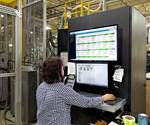Penn State Behrend to Host 2025 Innovation and Emerging Plastics Technologies Conference
Two-day event will explore the latest advancements in plastics engineering, manufacturing and digital transformation.

Penn State Behrend will host the annual Innovation and Emerging Plastics Technologies Conference on June 11–12, 2025, at the Burke Center in Erie, Pennsylvania. The two-day event will convene over 200 plastics professionals from more than 40 companies to explore the latest advancements in plastics engineering, manufacturing and digital transformation.
The conference will feature keynote speaker Bryan DeBois, director of Industrial AI at RoviSys. With 25 years of experience in manufacturing innovation, DeBois will present “Capturing Industrial Expertise with Autonomous AI Agents,” discussing how autonomous AI can preserve critical knowledge in the face of a retiring workforce. He will differentiate between generative and autonomous AI, share real-world success stories and explain how these technologies can help manufacturers retain and scale essential skills.

Morning sessions will include concurrent tracks on injection molding technology, materials technology and executive/management practices. Afternoon programs will offer three-hour tutorials, many with hands-on components in Penn State Behrend’s 10,500-square-foot plastics processing lab—the largest and most comprehensive plastics training lab in the country.
“We have a wide range of topics and a diverse audience, so there will be numerous takeaways,” says Brad Johnson, lecturer in engineering and conference chair. There will be sessions offered to help practitioners understand some of the trends in the plastics industry as well as more technical sessions on topics such as additive manufacturing, processing, materials, material analysis, product development and tooling.
For more information and to register, visit the .
Related Content
-
Understanding the Effect of Pressure Losses on Injection Molded Parts
The compressibility of plastics as a class of materials means the pressure punched into the machine control and the pressure the melt experiences at the end of fill within the mold will be very different. What does this difference mean for process consistency and part quality?
-
A Systematic Approach to Process Development
The path to a no-baby-sitting injection molding process is paved with data and can be found by following certain steps.
-
Back to Basics on Mold Venting (Part 2: Shape, Dimensions, Details)
Here’s how to get the most out of your stationary mold vents.


